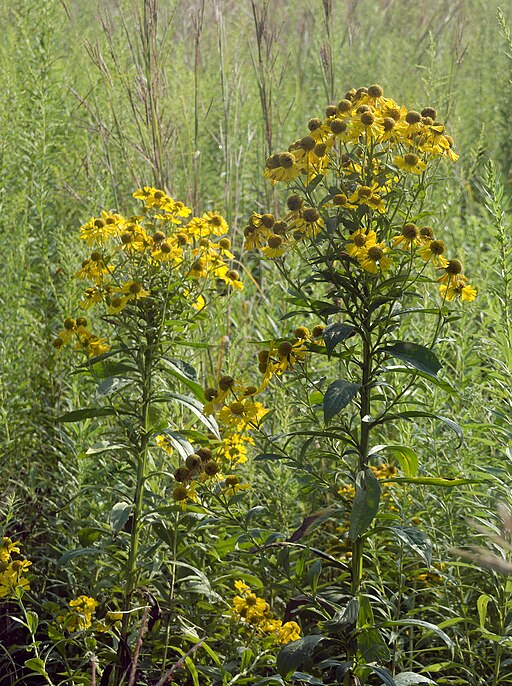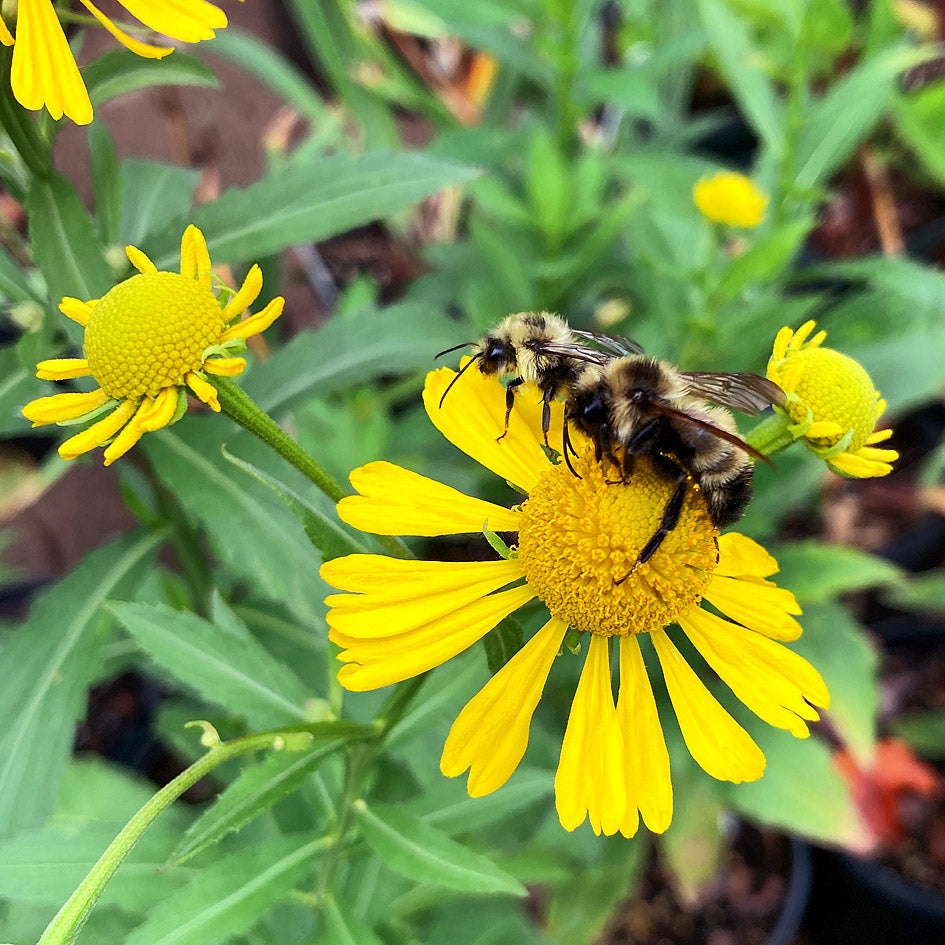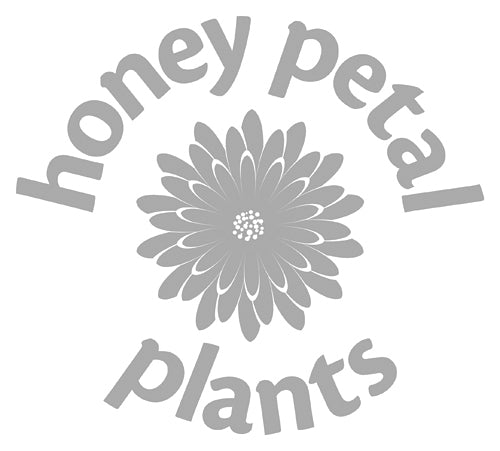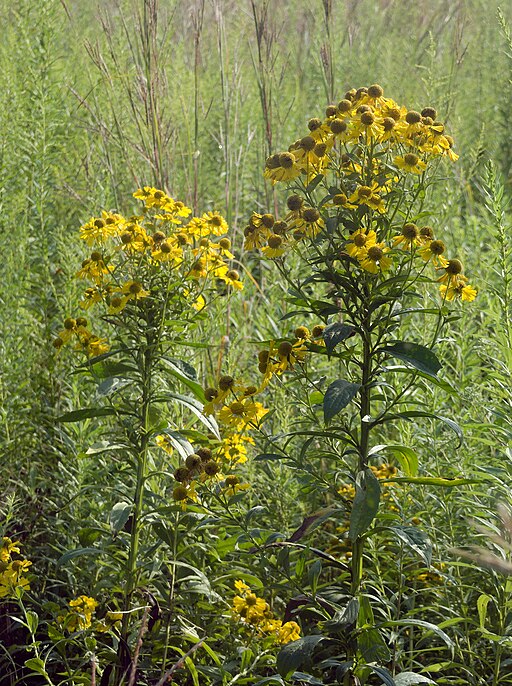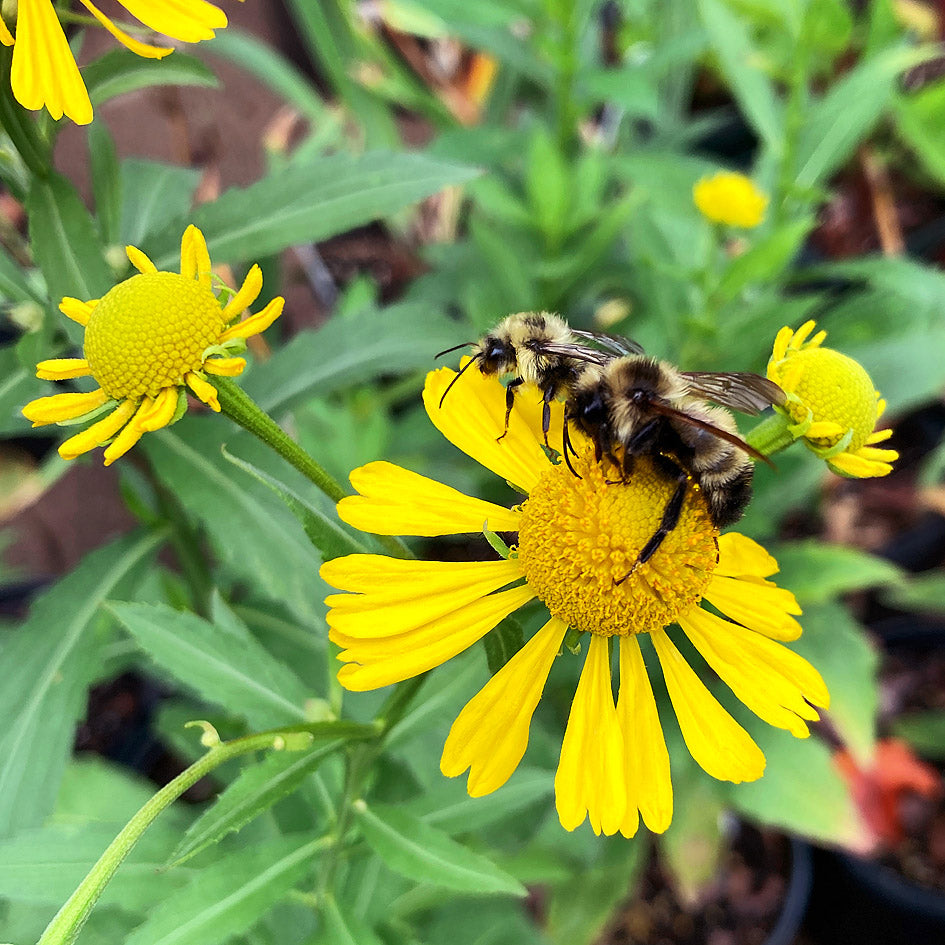Honey Petal Plants
Helenium autumnale - Helen's Flower
Helenium autumnale - Helen's Flower
Couldn't load pickup availability
Sizes available: #1 (Trade gallon)
Basics: zones 3-8, 36-60" x 24-36", full to part sun, cheerful yellow flowers in late summer to fall, prefers a consistently moist site and is not a drought tolerant plant, clay tolerant and does not need extra fertilizing
Common names: Helen's Flower, Fall or Autumn Sneezeweed, Dogtooth Daisy
Family: Asteraceae
Origin/Distribution: The Lady Bird Johnson Wildflower Center says this plant is native to the Northwest Territories of Canada as far south as Northern California, Arizona, Louisiana, and Florida. The site goes on to say that it is now present in 47 states and has "naturalized" in New England. BUT, Go Botany indicates that it is "native" in Maine, Vermont, Massachusetts, Connecticut, and Rhode Island. I have so many questions. For one, not native in New Hampshire, but native in every other New England state? And why does the LBJWC go out of its way to state that it has naturalized in New England?
Regardless of such botanical brouhaha, these plants were grown from seed collected in New England and Helenium autumnale is a most excellent plant.
Habitat: damp low spots, wetlands, moist and open areas along waterways and ponds, wet meadows
More: This is one of our many native plants that Europeans fell in love with before we were even paying attention and they have done some fussing to make pretty cultivars of various heights, bloom times, and colors in the reddish-orange to yellow range. H. autumnale offers pollen and nectar late in the season, is deer resistant, and amenable to an early summer prune to encourage branching and manage height. Drought will diminish flowering. This plant has potential as an anti-tumor agent and has been used medicinally. However, it can be toxic for cattle. It contains the compound helenalin which has shown efficacy as an anti-tumor agent but is also poisonous to insects, fish, and worms. The plant may cause contact dermatitis in some people. As with all medicinal plants, proceed with caution. Its common name, Sneezeweed, does not refer to any potential to cause allergies as it is not wind pollinated. The moniker comes from its use as a snuff by indigenous peoples in order to cast out evil spirits. I imagine this makes a good cut flower, but I haven't tested it for vase life yet.
Nursery: Van Berkum, grown from seed collected in New England
Image credit: Wikimedia Commons; also Frank Meuschke from Shelterwood Gardens
